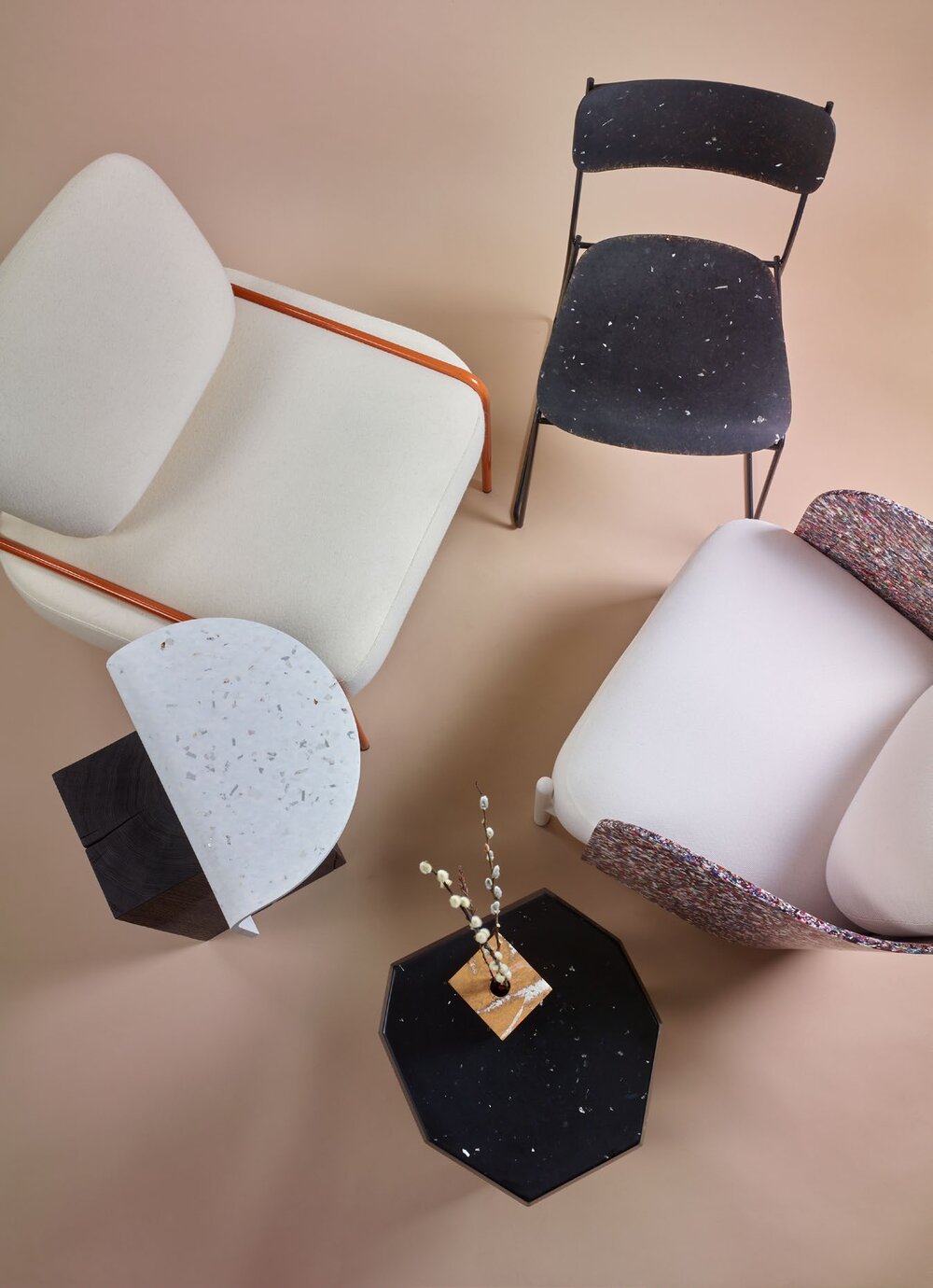Sustainability : Noma-éditions, a design and ecological furniture

Like many sectors, the design furniture sector is being affected by the ecological awareness of consumers. Designers and manufacturers must therefore combine sustainability with aesthetics and functionality. Among them, Noma-Editions, a company created by designers, which offers high-end furniture and design objects made from recycled and bio-sourced materials.
Guillaume Galloy and Bruce Ribay, two designers, co-founded their company, which is 70% French, on the concept of eco-design. Noma-Edition stands for “No” for noble and “Ma” for materials, because the use of recycled materials does not prevent the creation from being luxurious. Their credo? To do what they love while acting for a better world.
Indeed, for the two creators, eco-design is not synonymous with cheap objects, quite the contrary, their approach is clearly focused on the high-end. In fact, their approach is first to attract customers by the beauty and aesthetics of their offer, and then to reveal to the customer what is hidden behind the sublime design: materials coming from a good part of the waste of the consumer society.
The percentage of recycled materials is discreetly indicated on the designs, as it is possible that if the origin of the materials was clearly displayed, the target clientele might not have paid attention to their beautiful furniture. Indeed, even if the green conscience is becoming more and more widespread, it is not present enough for the criterion of sustainability to be a priority purchase criterion.
Although eco-design involves more time, trade-offs and investment, it must be integrated into the manufacturing processes from the earliest stages of a product’s development.
This means that furniture is made in smaller quantities, but designed to be repairable or reusable in the long term. “It is perhaps more difficult for large furniture manufacturers because all their habits and logistics have to be rethought,” say Guillaume Galloy and Bruce Ribay.

Their creations include Gracile, a console made of travertine residue by RDAI, an armchair made of recycled steel tubing and undyed French wool weaving by Charlotte Juillard, candleholders made of ‘neglected stone’ by Sam Baron, and a small stool by Martino Gamper, all of which are made of 74% to over 99% recycled material.

To achieve their objectives, the creators are accompanied by a team of designers they met during their respective experiences. Both have worked for well-known companies for twenty years. Guillaume Galloy started out in groups such as Louis Vuitton and Sephora, while Bruce Ribay has managed the design and construction of 300 points of sale for luxury brands in France and abroad. This first part of their careers has forged their experience.

Today, they multiply their collaborations with artists who have similar aspirations to their own, with the idea of “making a difference”.
Read also > SUSTAINABILITY IS NOW AN INTEGRAL PART IN THE CONCEPTION OF LUXURY HOMES
Featured photo: © Noma[/vc_column_text][/vc_column][/vc_row]
[EN] CLAIRE DOMERGUE, A SPECIALIST IN COMMUNICATION IN THE LUXURY SECTOR, HAS SURROUNDED HERSELF WITH EXPERTS TO CREATE THE FIRST MEDIA DEDICATED TO THE ECONOMIC NEWS OF LUXURY AND FASHION. THE LATTER DRAWS THE ATTENTION OF ITS READERS TO ALL THE MAJOR PLAYERS IN THESE SECTORS WHO SHARE THEIR EXPERIENCES, VISIONS AND KNOW-HOW. MORE THAN A SPECIALIZED WEBZINE, LUXUS PLUS IS A MULTI-SECTOR INFORMATION SYSTEM, WHICH HAS BECOME THE REFERENCE MONITORING TOOL FOR LUXURY AND FASHION PROFESSIONALS. OUR NEWSLETTERS CONTRIBUTE TO MAKE OUR READERS AWARE OF THE CHANGES AFFECTING THE LUXURY INDUSTRIES. THANKS TO AN INCREASED WATCH AND AN EXCELLENT KNOWLEDGE OF THE SECTOR, WE ARE INTERESTED IN THE MAIN ECONOMIC AND TECHNOLOGICAL STAKES OF FASHION, FINE WATCHMAKING, JEWELRY, GASTRONOMY, COSMETICS, PERFUMES, HOTELS, PRESTIGIOUS REAL ESTATE...********[FR] Claire Domergue, spécialiste de la communication dans le secteur du luxe, s’est entourée d’experts pour créer le premier média consacré à l’actualité économique du Luxe et de la mode. Ce dernier attire tout particulièrement l’attention de ses lecteurs sur l’ensemble des acteurs majeurs de ces secteurs qui y partagent leurs expériences, visions et savoir-faire. Plus qu’un webzine spécialisé, Luxus Plus est un système d’information multi-sectoriel, devenu l’outil de veille de référence pour les professionnels du luxe et de la mode. Nos newsletters de veille contribuent en effet à sensibiliser nos lecteurs aux mutations qui touchent les industries du luxe. Grâce à une veille accrue et à une excellente connaissance du secteur, nous nous intéressons aux principaux enjeux économiques et technologiques de la mode, la haute horlogerie, la joaillerie, la gastronomie, des cosmétiques, parfums, de l’hôtellerie, l’immobilier de prestige…






